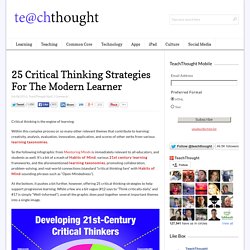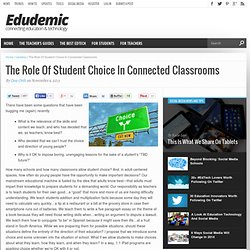

Fake News. Theme 11. Action Research. Eureka! - Teaching Strategies. Teaching basic literacy draft final2. Reading_job_adverts. Teaching_beginners_V3ispring.pptx__0. Great learning strategy websites. Helping Learners Remember What They Learn: 4 Time-Tested Principles. Helping Learners Remember What They Learn: 4 Time-Tested Principles Highly competent instructional designers and professionals now make the most out of scientific research.

They usually incorporate new insights, test them and repeat what works. Over time, the weaker insights falter then fade while the stronger ones remain. These scientific principles that stood the test of time are really worth looking at. Here are four of the best: 1) The Spacing Effect In 1885, psychologist Hermann Ebbinghaus found that people forget a whopping 80% of material they recently learned within 24 hours. It's much harder to retain meaningless information.It's much easier to re-learn material than the first time.Learners will experience great success by spreading out their study sessions over time, not by engaging in one-night cram sessions.Instructors and designers can help learners store information in the long-term memory by repeating instruction and spacing it out over time. Focus on Longer Spacings. A-Glimpse-into-the-Future-of-Learning-Infographic_0.pdf.
Inquiry methodology. 25 Critical Thinking Strategies For The Modern Learner. Critical thinking is the engine of learning.

Within this complex process or so many other relevant themes that contribute to learning: creativity, analysis, evaluation, innovation, application, and scores of other verbs from various learning taxonomies. So the following infographic from Mentoring Minds is immediately relevant to all educators, and students as well. It’s a bit of a mash of Habits of Mind, various 21st century learning frameworks, and the aforementioned learning taxonomies, promoting collaboration, problem-solving, and real-world connections (standard “critical thinking fare” with Habits of Mind-sounding phrases such as “Open-Mindedness”).
At the bottom, it pushes a bit further, however, offering 25 critical thinking strategies to help support progressive learning. While a few are a bit vague (#12 says to “Think critically daily,” and #17 is simply “Well-informed”), overall the graphic does pool together several important themes into a single image. Strategies. Strategies Learning Tools. Differentiation. Coaching leadership. Welcome to the Excellence Gateway. How to Implement Deep Learning Characteristics in the Classroom. Deep learning is the foundation on which I instruct my students; whether it is through the use of practical thinking skills, human dimension activities, and/or data gathering.

There are other deep learning characteristics I implement daily, but these are most commonly used in my classroom. These strategies help to... Deep learning is the foundation on which I instruct my students; whether it is through the use of practical thinking skills, human dimension activities, and/or data gathering. There are other deep learning characteristics I implement daily, but these are most commonly used in my classroom. These strategies help to keep me focused on one common goal for all my students: to promote better learning outcomes for all students-ones that are transformational. Engaging students actively in their own learning, and encouraging understanding of presented materials, should be the main goal of all educators. Practical thinking skills are an essential part of my lesson planning. How to Focus Attention in Adult Learning and E-learning.
Studies show that focus is a key attribute for performance improvement and success in life.

Yet today’s modern workplace is full of distractions, from text to tweets. Check out these effective techniques for increasing focus for adult learners participating in e-learning, classroom training, and other learning events. From nano-learning to rewards, learn how to focus attention and improve e-learning outcomes. Daniel Goleman, psychologist and author of the bestseller Emotional Intelligence, has just written a book called Focus: The Hidden Driver of Excellence.
Goleman calls “attention” a “little-noticed and underrated mental asset,” which is essential to success in work, play, relationships, and self-awareness. Eureka! - Teaching Strategies. Examples of ILP. The Role Of Student Choice In Connected Classrooms. There have been some questions that have been bugging me (again) recently.

What is the relevance of the skills and content we teach; and who has decided that we, as teachers, know best? Who decided that we can’t trust the choice and direction of young people? Why is it OK to impose boring, unengaging lessons for the sake of a student’s “TBD future?” How many schools and how many classrooms allow student choice? And, in adult-centered spaces, how often do young people have the opportunity to make important decisions? iPads Bring Choice iPads have shocked the school system and provided us with a chance to reexamine student choice. Consider…. In “real life,” students often have a voice expressed through social media, peer groups, sports team, etc. How Do We Reinvent? When you ask people to design a solution for a current problem, they speak and imagine from what they know.
ELT Ideas.